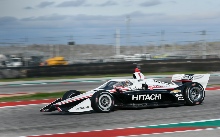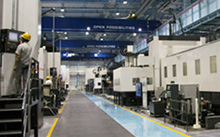
Utilization of data is essential for business strategies in the digital age. This is because collecting a wide variety of data and using AI and other technologies to perform big data analysis has the potential to generate business transformation and creation of new businesses. Analysis of "live voices" such as word-of-mouth from personal blogs and social networking services (or social media) is increasingly applied to improvements of products/services development as well as risk control. The challenge lies in extracting valuable information from the massive amount of data on the internet—it is unimaginably hard.
To address this, Honda Motor Co., Ltd. (hereinafter referred to as "Honda") and Hitachi have jointly developed a “Sentiment Analysis Service” that can accurately visualize and analyze customers’ voices and emotions emanating from social media and other forms of online interaction. Collaborative creation of these two companies to develop “Sentiment Analysis Service” have started with the aim of encouraging the development of innovative products and services.
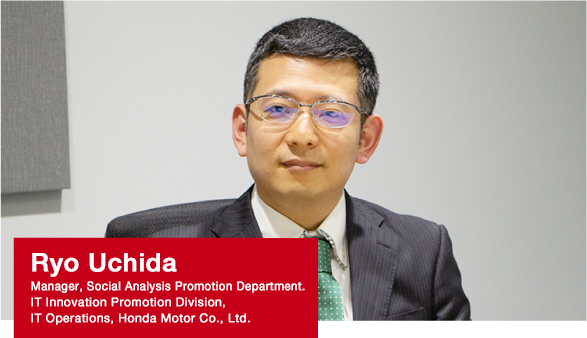
Creating new innovation with digital technology is a common and big challenge for many companies.
One of the companies taking the lead in this is Honda, known as a global manufacturer of motorcycles and automobiles. Since its foundation, Honda has taken on one challenge after another. Examples of this are the Super Cub motorcycle, a best-seller that has achieved a global production of 100 million units, and the HondaJet, a light business jet.
Recent years have witnessed increasingly fierce global competition and a diversification of consumer needs. In such an environment, creating never-before-seen products and services is a daunting task. Honda's response to this is to pursue research & development in new areas while going forward with extensive open innovation by taking an active approach to collaborate with startups and other different types of industries.
As part of the creation of innovation for the future, Honda worked with Hitachi to develop a system that puts voices from outside the company such as the social media, into a form that can be applied to marketing and other activities.
Honda's Ryo Uchida says: "As the manufacturing industry devotes efforts to not only monozukuri*1, but also to kotozukuri*2, Honda will need to speedily and accurately ascertain what the world expects of us now to inspire ourselves toward new innovation. Previously, we got a precise grasp of the voices of customers that contacted call centers and fed them back into product development and improvement. However, in the future, when digital natives will be predominant customers, it will be impossible to produce innovative products and services that keep up with trends without capturing a wide range of their voices from blogs and other internet interactions. To deal with this, in 2017 we started developing a tool that can gather and analyze the voices of customers from the social media sphere.“
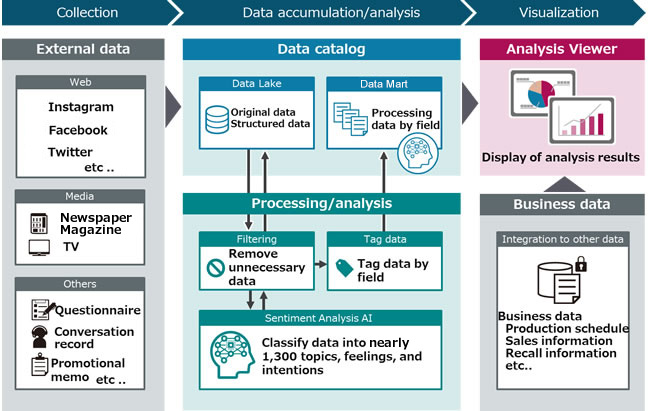
Note: AB Square is a registered trademark of the Institute of Language Understanding Inc. and is an SaaS service for sentiment information analysis.
Mr. Uchida relays how, at first, Honda tried word-of-mouth analysis services based on cloud, but this attempt was discontinued due to the lack of ability to sort out all the necessary information, along with issues concerning how to link them up to in-house systems for future use. Further, while developing prototypes in collaboration with consulting firms were useful for proof of concept, they never reached the phase of actual operation due to limitations in database structure and expandability.
The next step for Honda was to select Hitachi as their new partner and to start a joint development of a new system.
According to Mr. Uchida: "Because the workplace and management wanted an environment that could hold up to company-wide operation, we resolved to conduct the development of a full-scale system. We received proposals from a number of companies, including Hitachi, but it was Hitachi's technological capabilities and their on-point proposal that were decisive factors in our final selection."
Based on a series of discussions between the two companies, a basic system was completed in just five months. The system was released in-house by Honda seven months later, which automatically collected data from publicly available word-of-mouth information on the social media on the newspapers, television, and other types of mass media. Using an AI engine from the Institute of Language Understanding Inc. (ILU), a startup originating out of Tokushima University, data converted into text was used to classify/categorize customer voices into nearly 1,300 types of topics, emotions, and intentions in real time.
Regarding emotions in particular, a concrete image held by a customer about a company or product was classified into 3 types of categories: "positive," "neutral," and " negative," which were then further categorized into one of 81 types of emotions, such as "satisfaction" and "disappointment." This system made it possible to bring out the sentiment of each and every person.
Mr. Uchida goes on to emphasize that "Honda has positioned this system as a Voice of Stakeholder (VoS) tool, a further extension of the Voice of Customer (VoC) concept for enhancing customer satisfaction. The reason for this is that, in addition to customers, each associate is also an important stakeholder, and although everyone may know about Honda, we want to take a sincere approach to listening to all voices, including from those who have never used our products, and to use this to provoke innovation."
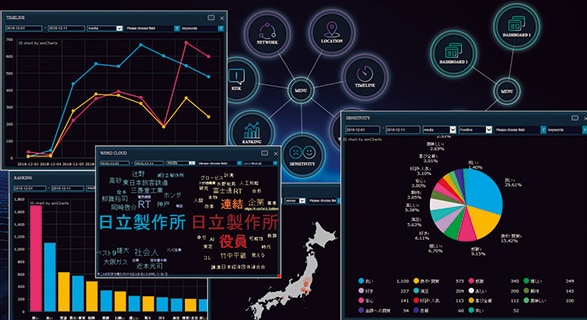
Sentiment Analysis Service screens
Since April 2018, Honda's Corporate Communications Division has been using this system in the analysis of reactions to announcements of new vehicle and to exhibits at events such as motor shows.
Daisuke Sakamoto, who was responsible for development, makes the following comments:
"In the past, it took a considerable time to even just organizing the reactions that were attained by media exposure and the internet took considerable time. However, using this system lets us identify customers’ emotions, such as how they took our announcements—whether their reaction was negative or positive—and visualize them by detailed categories such as vehicle type or topic, and then allows us to obtain a quantitative and objective understanding of them. The speed of getting to the information we want increased dramatically. If necessary, it is even possible to see reactions in nearly real time."
Mr. Sakamoto also describes how cases also exist in which the system was useful in making changes to marketing strategies for new product. When sales of a certain motorcycle were launched, it was reported by the media as a product that put out horsepower. Honda's concept of the product, however, was not just its horsepower, but moreover other performance features and riding ease. Immediately upon becoming aware of this reporting, the marketing strategy was modified. The marketing department was able to implement new measures with sprint-worthy swiftness.
Mr. Uchida says: "Cost and labor vary considerably depending on whether a specific action is taken before or after a certain image becomes established in the community. In this respect, as this system makes it possible to ascertain changes in public opinion and gauge the appropriate timing of measures, I think it is also extremely useful as a brand strategy and risk response tool."
As it can be imagined, the journey up to this point was not a smooth one. Although the development period itself was short, Honda and Hitachi met once or twice a week for close discussions to directly check on requests and improvements, persevering in repeated implementation tests amidst a constant cycle of trial and error.
Mr. Sakamoto explains as follows:
"We had Hitachi develop the technology for sorting mass amounts of data and for reducing the system maintenance load, while conveying to them our requests. Responding to repeated feedback comprising impressions and requests from the Corporate Communications Division staff who tried out the system, Hitachi turned in a tremendous effort, paying meticulous attention to the user interface and to system response speed in order for all associates to easily use the system without a user manual. If operation by those in charge without specialized knowledge is not a stress-free experience, the system is disqualified as a tool for producing innovation. Various discussions and requests from this perspective were continuous, but from start to finish, Hitachi's engineers speedily deployed implementations and improvements."
Operating the system is of course not an end in itself. In the future, Honda intends to go forward to correspond to system linkups with voice and email information from call centers and deployment to international offices (in countries and regions such as China, Asia, and the English-speaking regions), while also accumulating an extensive range of voices from outside the company and making use of these data for global product development, marketing strategies, and brand value enhancement.
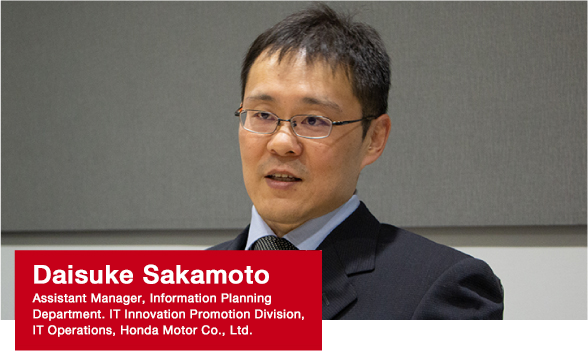
Mr. Uchida talks of his hopes, as follows:
"Depending on how this tool is used, it can expand various possibilities. One of these would be the development of product features and services that are desired in specific regions, such as Asia or Africa. In terms of how our public language usage or expressions are taken by consumers, this tool will also be helpful to marketing. As responses are expressed not only by words, but also by emotions, this should let us overcome language barriers and penetrate further into the genuine needs and competencies (to be turned into products) that people are tuning into."
Furthermore, Hitachi has also begun offering this Sentiment Analysis Service, developed through collaborative creation with Honda, and the base for this tool. The combination and analysis of customer voices and operational data will enable Hitachi to continue contributing to the creation of new innovation by giving it a foundation for proposing a wide range of application solutions, including sales forecasting, production planning, and risk control.
Release Date: March 2019
Solutions By: Applications Services Division, Systems & Services Business Division, Hitachi, Ltd.




